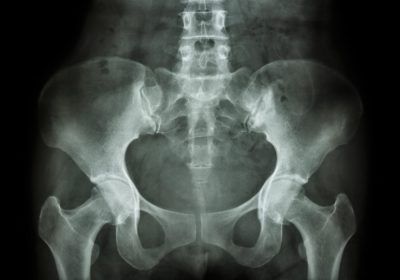What does core stability mean? More or less what it sounds like, being stable through the core. The core is the area from your waist up to your lower thoracic spine, the “core” of your body. The lower back or lumbar spine and the pelvis are the literal scaffold of the core.
The core muscles have attachments along various parts of the lumbar vertebrae, the pelvis, and the femur. In order to generate movement, power, and torque through the arms and legs there has to be a stable base. The core (lumbar spine and pelvis) provide this stable base.
Without a stable platform extremity strength and mobility are not optimal. From everyday activities like picking up a child, doing yard work, or moving furniture to high level athletic pursuits a stable lumbopelvic region is key.
Think of core stability as core stiffness. The stability and stiffness comes from the core musculature controlling lower back motion. The muscles of the trunk and lower back function primarily to check motion and control it. Not produce motion.

So core stability is trunk stiffness that allows the lumbopelvic complex to function as a solid, stable base. With a solid, stable base the arms and legs can generate motion, power, and torque. Without too much compressive and shear forces through the lower back.
Why Core Stability’s Important
Core stability is important because when there is too much movement through the lumbar spine accelerated wear and tear and pain can result.
The lumbar spine has five levels, each level is referred to as a motion segment. You have L1-2, L2-3, L3-4, L4-5, and L5-S1. So each level allows motion, mainly flexion/extension through the lumbar motion segments. Although small amounts of rotation and side bending are present.
Anatomically the L4-5 and L5-S1 motion segments allow more motion compared to L1-2 through L3-4. This is the reason L4-5 and L5-S1 are the levels that generally have herniated discs, degenerative disc disease, and facet joint arthritis. There is naturally more age related wear through these two lower lumbar levels. Not surprisingly it’s these two levels that often become symptomatic when people have lower back pain.
Even in people without lower back pain MRI imaging shows the same types of age related changes.
A stable lumbar spine reduces wear through the L4-5 and L5-S1 motion segments. This is especially important for people with lower back pain due to the fact that excessive movement through these lower levels is often the underlying cause of pain.
Adequate stability through the lower lumbar levels is often enough to greatly reduce or eliminate lower back symptoms. Research proves that stabilization training is more effective compared to general exercise for decreasing lower back pain.
Determine if Your Back Needs More Stability
Try this simple test. Pick an activity or movement that you know increases your lower back pain. This could be anything. Bending forward, rolling over in bed, standing from sitting, reaching for something in a cupboard. Doesn’t matter what it is. It just needs to be something that makes the lower back pain increase.

Now, do whatever it is you picked. OK, note how much it hurt. Now, you’re going to do the same exact thing again. But before you do it again you’re going to do an abdominal brace.
An abdominal brace is simple. If someone were going to walk up and punch you in the gut you would naturally tighten your core up. This is all an abdominal brace is, you’re just bracing your core. Tightening up the muscles. Don’t worry about pulling your stomach in towards your spine or anything else. Simply tighten up your core muscles. It doesn’t take much. Research shows only about 10% of maximum voluntary contraction. You should still be able to talk and breath.
So, turn on your abdominal brace. Now do whatever increased your back pain. If it hurts less or doesn’t hurt at all then you will benefit from improved core stability. It’s that simple. Most people with lower back pain will benefit from core stability training.
Lumbar stability training increases stiffness of the abdominal musculature, allowing the spine to act as a rigid, stable base. Endurance and control of the core musculature is more important compared to strength. There needs to be enough stiffness to limit excessive motion, especially through the lower lumbar segments. This requires more endurance and neuromuscular control than pure strength.
How to Build Stability and Stiffness
To build your base start out with these three proven stabilization exercises. After two or three weeks of consistent work you will have mastered these exercises. Move on to the core stability exercise progressions. Once you feel confident with these and your lower back is less painful check out the advanced stabilization exercises for low back pain.
FAQS
Core stability is adequate stiffness of the torso and lower back. The stiffness or stability is generated and maintained by the core muscles. The muscles of the core function primarily to stabilize the lumbar spine. With adequate core stability the lumbar spine acts as a rigid, solid base so the arms and legs can move and generate force and power. Without adequate stability and stiffness there can be excessive motion through the lower lumbar spine. With excessive lower lumbar motion the discs and facet joints can become overloaded, leading to microtrauma, inflammation, and pain.
Lumbar stability is especially important for people with lower back pain because often times there is excessive movement through the lumbar spine during everyday activity. Increasing the stiffness and stability of the core decreases forces through the lumbar spine. Less force through the lower back means less wear and tear. Less force and wear and tear leads to decreased pain.
Core stability is important because it allows the body to function and move properly. Without core stability there can be too much motion through the lower back during every day activities. Generally, excessive motion through the low back can lead to wear and tear through the discs, joints, and tissues of the spine. With adequate core stability and stiffness the discs, joints, and tissues of the lower back remain healthy.
Core stability is especially important for people with lower back pain because often times there is excessive movement through the lumbar spine during everyday activity. Increasing the stiffness and stability of the core decreases forces through the lumbar spine. Less force through the lower back means less wear and tear. Less force and wear and tear leads to decreased pain.
Core stability training involves training the core muscles to increase stiffness and limit excessive motion of the lumbar spine. Particularly the lower lumbar motion segments. There are countless exercises and ways to train the core. The key is training the core in a way that enhances stiffness and stability while minimizing compressive and shear forces through the lumbar spine. When done correctly core stability is a proven method to reduce lower back pain.



